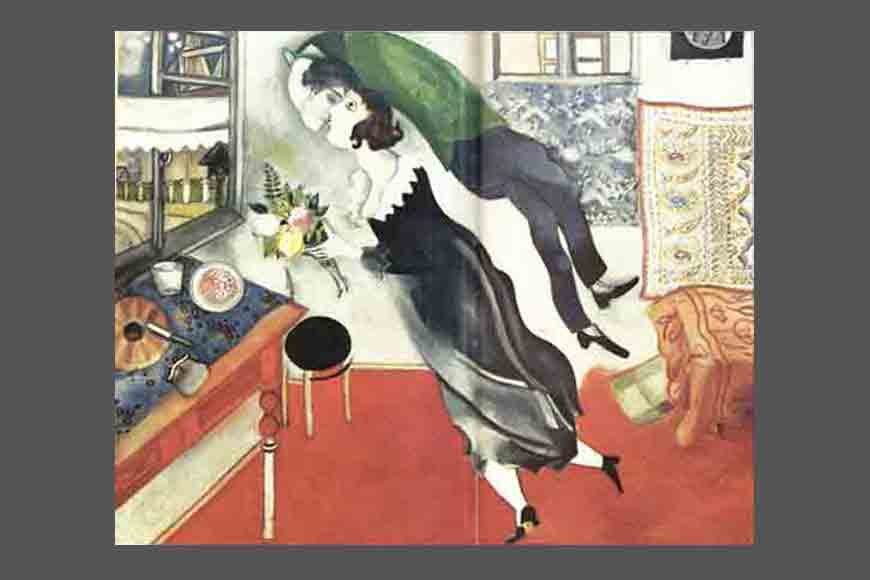Picasso and Chagall's artworks show distinct influences of Bengal's Patachitra and Kantha!

How about viewing a bit of Bengal’s own Kantha work on a 1915 painting by the famous surrealist artist Marc Chagall? Art connoisseurs know why his painting The Birthday (1915) had made waves in a new direction when it was created. A couple is seen suspended in loving bliss in a bright living room setting dominated below by a vivid red carpet. And what none will miss if the piece of intricately kantha-stitched piece of cloth, complete with a typical kolka motif in the right-hand side of the canvas. The painting is balanced above by the ivory, beige and tans of the living room furniture and wall decorations. The man’s head is unrealistically craned upside down and backward as he twists around to kiss the woman. The kantha work makes us wonder if Chagall had been exposed to Indian art and was influenced by Bengal’s folk art and used it in his work. It has not been confirmed, but experts might be able to throw light on this.
In the world of art, exchange of concepts, ideas, forms et al is a regular and constant process that begets newer ideas, concepts and forms. These exchanges are not confined within any geographical location or time frame. The creative mind transverses all spatial barriers to satiate artistic cravings. In this way, artistic ideas travel in all directions. Oriental art, European, Middle Eastern, African art, and the art of the Americas mingle in the great cauldron of creativity. Artists and sculptors are part of this churning process. They witness the waves rolling in and out of focus and then suddenly inspiration hits and the creative process starts. The symbiotic process of the heart and hand, begin and a work of art is created. In India, this process got momentum during the colonial rule when the Western world discovered Indian art and India discovered the western art form.
It was during the reign of Mughal Emperor Jahangir. Captain W. Hawkins and Sir Thomas Roe visited his court with ample nazrana (gifts). Among the gifts were a few illustrated editions of the Bible. The emperor liked the illustrations and he asked the court artists employed in his Durbar to copy the paintings. The artists complied. The beatific portrait of Virgin Mother Mary holding baby Jesus in her arms was brought to life by the deft fingers. The process of exchange began.Dutch ships carried exquisite paintings of Mughal Sultanate to their land and caught the attention of world-renowned Baroque artist Rembrandt. He was also a collector and dealer of artworks, and the moment he set his eyes on the exquisite Mughal paintings of India, he was hooked. He was fascinated by the beauty and detailing and started painting portraits of Mughal princes in the Mughal style.
This process of amalgamation has continued since then. In contemporary art for instance, Van Gogh or Paul Gauguin borrowed from Japanese wood carved art designs and included in their works to create novelty. It is also believed that Picasso and Fernando Leso had studied and had even procured Kalighat Pata-chitras and wood carvings of Bottola because in many of their works, a distinct influence of these two Indian folk-art forms can be traced.










